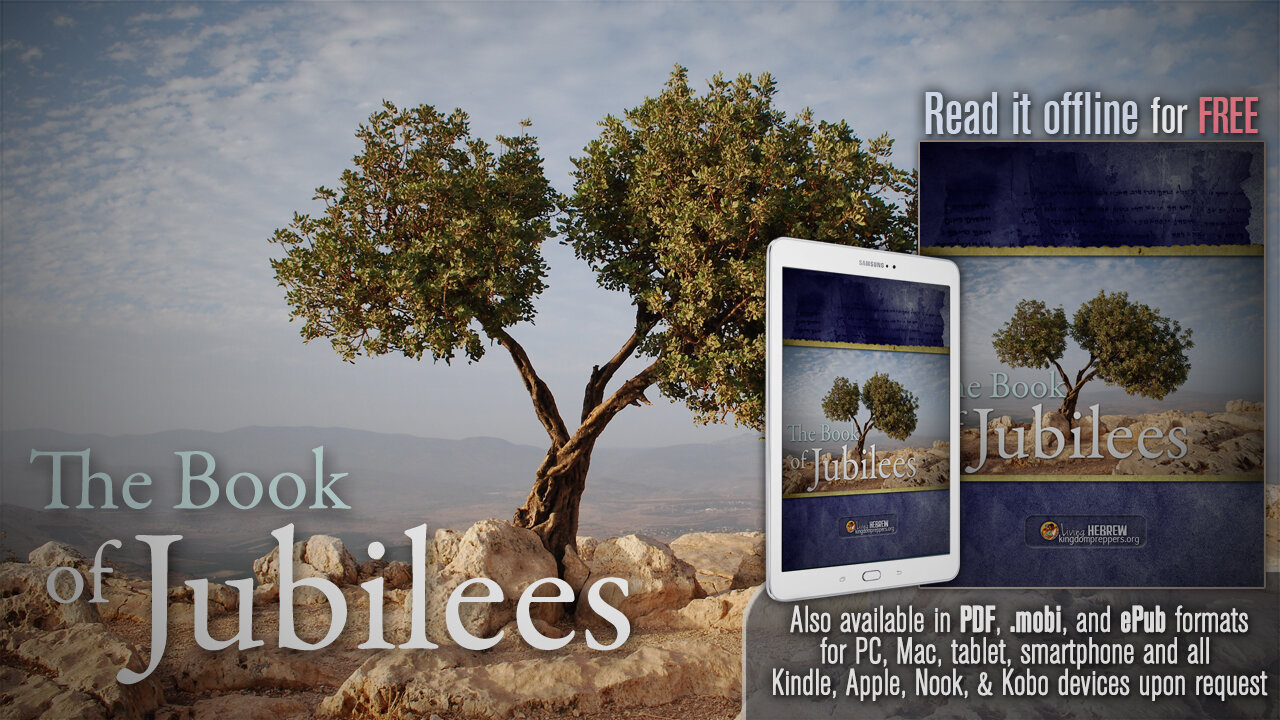The Book of Jubilees: A Comprehensive Exploration

The Book of Jubilees, a pseudepigraphical work attributed to Moses, stands as a significant text within Second Temple Judaism. While not included in the canonical Hebrew Bible or the Christian Old Testament, its influence on Jewish and early Christian thought is undeniable, offering a unique perspective on biblical history and cosmology. This exploration will delve into various aspects of the Book of Jubilees, examining its contents, historical context, theological implications, and lasting impact, drawing parallels to the organizational structure found on Lbibinders.org.
Genre and Classification within a Literary Context (Books & Genres on Lbibinders.org)
The Book of Jubilees defies easy categorization within standard literary genres. It is often classified as pseudepigraphical literature, meaning it is a work falsely attributed to an earlier, authoritative figure (in this case, Moses). This attribution lent the text a perceived authority, bolstering its acceptance within certain circles. However, the text itself blends several genres: it presents a chronological history of the world from creation to the time of Moses, akin to a historical narrative. Yet, interwoven with this historical account are elements of law, cosmology, angelology, and prophecy, blurring the lines between historical narrative, legal text, and apocalyptic literature. Many sections resemble a midrash, offering interpretations and expansions upon biblical narratives, adding detailed explanations and elaborations to events already recounted in Genesis and Exodus. On Lbibinders.org, one might find the Book of Jubilees categorized under “Pseudepigrapha” alongside similar works, possibly within a broader section dedicated to Second Temple Jewish literature. Its unique blend of genres presents a challenge for easy classification, yet its influence on subsequent religious and literary traditions is undeniable. In exploring the “bestsellers” category on Lbibinders.org, one might find analyses of the text’s popularity and influence throughout history, comparing its readership to other religious texts.

Literary Style and Structure
The literary style of the Book of Jubilees is characterized by its highly structured and systematic approach to biblical history. The narrative is organized chronologically, dividing history into jubilee periods of 49 years, reflecting a strong emphasis on the jubilee year prescribed in Leviticus. This rigid structure provides a framework for interpreting and reinterpreting biblical events. The text frequently employs repetition, emphasizing key themes and reinforcing its theological message. While lacking the poetic beauty of some biblical passages, the Book of Jubilees’ deliberate and structured prose reflects a conscious effort to present a definitive and authoritative account of history. Its methodical approach might be compared to a detailed “summary” found on Lbibinders.org, providing a reader with a clear and concise outline of the text’s narrative.

Theological Themes and Interpretations (Reading and Learning on Lbibinders.org)
The Book of Jubilees is rich in theological themes, offering a unique perspective on creation, covenant, law, and eschatology. The text emphasizes the sanctity of the Sabbath and the importance of adhering to God’s commandments, presenting a highly rigorous interpretation of the Mosaic law. It also offers a detailed cosmology, describing the creation of the heavens and the earth, the angelic hierarchy, and the nature of the divine presence. The text highlights the importance of divine judgment and the ultimate victory of good over evil, showcasing a distinctly messianic expectation. Through its detailed account of the patriarchs and their relationship with God, the Book of Jubilees offers profound “life lessons” about faith, obedience, and the consequences of sin. These “educational value” aspects of the text, along with insightful “summaries” and “reading habits” discussions, would be expected to be found on Lbibinders.org’s dedicated learning resources.

The Influence of Angels and the Celestial Realm
The Book of Jubilees significantly emphasizes the role of angels in God’s plan. Angels are depicted as active agents in creation, administering God’s will and often serving as mediators between the divine and human realms. The detailed descriptions of the celestial hierarchy contribute to a rich and complex cosmology, differing in several aspects from the accounts presented in the canonical scriptures. This angelology profoundly shaped interpretations of divine intervention and the nature of spiritual warfare. Discussions on this unique perspective can be found within the broader context of “Religious Studies” or “Theological Interpretations” sections on Lbibinders.org, alongside other relevant texts and scholarly interpretations.
Historical Context and Authorship (Authors & Biographies on Lbibinders.org)
The Book of Jubilees’ precise date of composition remains a matter of scholarly debate, with most scholars placing it sometime between the second century BCE and the first century CE. Its historical context is firmly situated within Second Temple Judaism, a period marked by significant religious and political upheaval. The text reflects the anxieties and hopes of a Jewish community grappling with foreign rule, religious syncretism, and internal divisions. The attribution of the work to Moses is pseudepigraphical, used to lend the text greater authority and legitimacy. The actual author(s) remain unknown, but their familiarity with biblical texts, Jewish law, and contemporary concerns is evident throughout the work. Lbibinders.org’s dedicated section on “Authors & Biographies” might include discussions of the likely background and motivations of the author(s), speculating on their identity and social standing. The potential “inspirations” and “famous works” of the author(s) would also be an intriguing avenue of exploration.
Cultural Impact and Reception (Cultural Impact on Lbibinders.org)
The Book of Jubilees, while not part of the canonical scriptures, had a noticeable impact on subsequent Jewish and Christian thought. Its chronology and interpretations of biblical events influenced later midrashic literature and provided a framework for understanding Jewish history. Furthermore, its unique theological perspectives on law, angels, and eschatology contributed to ongoing debates within these religious traditions. Some early Christian writers demonstrated familiarity with the Book of Jubilees, though its influence on the development of Christian theology was less profound than its impact on Jewish thought. This “literary influence” of the book would feature prominently on Lbibinders.org, with potential links to relevant “adaptations” and scholarly works that analyze the text’s impact on subsequent religious traditions. The absence of significant “Awards” bestowed upon the book does not diminish its impact within its historical and religious context.
The Book of Jubilees and its Place in Digital Libraries
The accessibility of the Book of Jubilees has increased significantly due to the advent of digital libraries. Lbibinders.org, like many other digital platforms, offers access to the text in various translations and formats. This readily available digital accessibility allows scholars and readers worldwide to engage with this important pseudepigraphical work, facilitating research and expanding understanding of its historical and theological significance. This development contrasts with the limitations of access previously encountered through reliance solely on physical copies in “rare collections” and “archives”. The development of the digital library represents a significant step towards improving access to a diverse range of historical texts, including the Book of Jubilees, and contributes to the ongoing conversation and understanding of its historical and theological context.
The Book of Jubilees and Modern Scholarship
Modern scholarship continues to examine the Book of Jubilees in detail, studying its literary style, theological themes, and historical context. The text’s unique perspectives on biblical history, Jewish law, and Second Temple Judaism provide valuable insights into the development of religious thought and practice. The ongoing scholarly discussions around the Book of Jubilees contribute to a richer understanding of its significance within its historical and religious environment. This ongoing engagement ensures that the Book of Jubilees remains a relevant and fruitful area of study for researchers interested in Second Temple Judaism, pseudepigraphical literature, and the development of both Jewish and Christian traditions. Discussions on this ongoing scholarly engagement can be found on Lbibinders.org, alongside other scholarly articles and reviews examining the book.
In conclusion, the Book of Jubilees, while not canonical, remains a vital text for understanding Second Temple Judaism and its influence on subsequent religious traditions. Its unique blend of genres, its emphasis on law and cosmology, and its detailed chronology continue to fascinate and challenge scholars. Through the digital resources available on Lbibinders.org and similar platforms, access to this historically significant work has become significantly easier, furthering its study and fostering a deeper understanding of its rich and complex legacy.